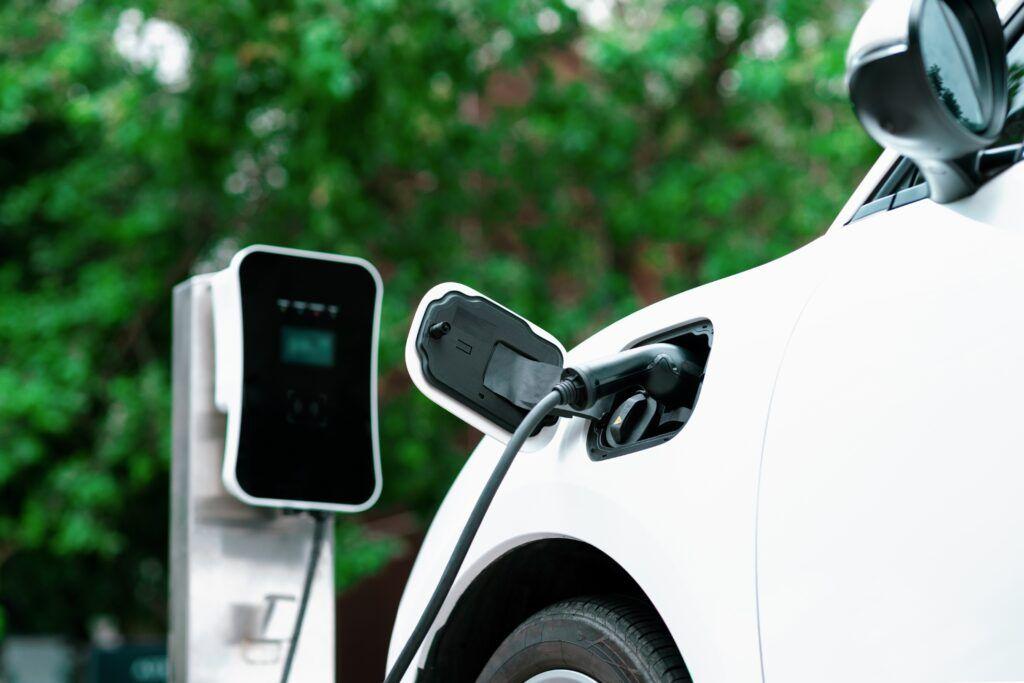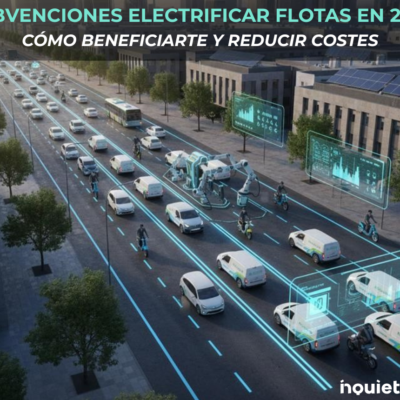The Moves III Plan came about in an effort to promote sustainable mobility amongst individuals, companies and administrations, with incentives aimed at the use of non-polluting vehicles. This third edition of the Government’s subsidy plan affords a series of benefits for those who opt for environmentally friendly vehicles, as a transition alternative to cleaner, more sustainable transport.
Against a backdrop in which efficient mobility has become a priority on the agenda of many governments and organisations worldwide, the Moves III Plan aligns with this global trend. With this in mind, it affords both economic and fiscal incentives in order to promote the adoption of cleaner, more sustainable technologies in the field of mobility, having been allocated funds which have now been raised to 1.2 billion euros.
What should you know about the Moves III Plan?
One of the main features of the Moves III Plan is its comprehensive approach, seeking to address various aspects of urban and rural mobility. In this regard, they offer incentives for the purchase of electric and fuel cell vehicles, as well as for the installation of charging points.
The beneficiaries of the Plan’s subsidy are the autonomous communities and the cities of Ceuta and Melilla. However, the ultimate recipients of the subsidies, which are granted directly, can be anything from individuals and the self-employed to communities of owners, legal entities incorporated in Spain, urban estate maintenance entities, agrarian processing companies, local entities or the public institutional sector.
The deadline for submitting applications has been extended until 31 July 2024, in the manner established by the autonomous communities and the cities of Ceuta and Melilla in their respective calls for tender.

What are the benefits of the Moves III Plan?
- Subsidies for the purchase of electric and fuel cell vehicles: buyers can benefit from direct financial aid when purchasing vehicles with low or zero emissions.
-
- The acquisition of plug-in electric and fuel cell vehicles is facilitated through direct acquisition, financial leasing or renting lease. The subsidy is aimed at new or semi-new vehicles, registered for the first time in Spain in the name of the recipient of the subsidy, except in cases of renting, which may be registered in the name of the renting company.
- Eligible vehicles include passenger cars, vans, electric motorcycles or electric quadricycles of various categories. However, acquisitions of M2 and M3 coaches or buses, as well as N2 and N3 trucks or vans, are not deemed eligible for subsidies.
- Purchases may be made of new vehicles or vehicles up to 12 months old as from when they first registered until the moment the purchase is made or the application is registered. Ownership of the vehicle must be with a dealer or point of sale that sells it to the beneficiary of the subsidy. In this case, the vehicle must have been purchased as new by the dealer or point of sale.
- In the case of individuals, the self-employed or administrations, this subsidy may attain up to €7,000, or €9,000 with scrapping. For further information about the amounts, the terms are public.
- Subsidies for the installation of charging points: the installation of charging points is encouraged in both public and private spaces, thereby facilitating the transition towards a more accessible, extensive charging infrastructure.
-
- This charging infrastructure may have any power and be used for various purposes:
- Private use in residences, including single-family homes.
- Public use in non-residential areas such as public parking lots, hotels, shopping centres, universities, hospitals, industrial areas, sports’ centres, inter alia.
- Private use in company parking areas, both private and public, to supply their own fleet.
- Public use in business parking areas, both private and public, to offer service to employees and customers.
- Public use on urban and interurban roads, as well as on the road network, with an emphasis on service stations and petrol stations.
- In the case of communities of owners, the electrical and communications installation necessary to implement smart charging of electric vehicles will be subsidised.
- As regards the subsidy amount:
- The self-employed, individuals, Communities of Owners and administration without economic activity:
- Municipalities <5,000 inhabitants: subsidy amounting to 70% of the total.
- Municipalities >5,000 inhabitants: subsidy amounting to 80% of the total.
- Companies and public entities with economic activity, public access charging and P ≥50kW:
- Municipalities >5,000 inhabitants: 20% large companies, 40% medium-sized companies, 50% small companies.
- Municipalities <5,000 inhabitants: 20% large companies, 40% medium-sized companies and 50% small companies.
- Companies and public entities with economic activity, charging with private access or public access with P <50kW:
- Municipalities >5,000 inhabitants: 20% subsidy of the total and 30% for SMEs.
- Municipalities <5,000 inhabitants: 20% subsidy of the total and 40% for SMEs.
- SMEs, who qualify for de minimis amounts at the time of making the request, charging with public access and P ≥50kW:
- Municipalities >5,000 inhabitants: 45% medium-sized companies and 55% small companies.
- Municipalities <5,000 inhabitants: 50% medium-sized companies and 60% small companies.
- The self-employed, individuals, Communities of Owners and administration without economic activity:
- This charging infrastructure may have any power and be used for various purposes:
Promotion of shared mobility and tax benefits
The Moves III Plan is also focused on the promotion of shared mobility. The use of shared transportation systems is encouraged through the implementation of programmes and subsidies aimed at their acquisition and maintenance. Furthermore, the Plan determines tax benefits for both individuals and companies which opt for efficient mobility vehicles, helping to cut the costs associated with their acquisition and maintenance.
Basically, the Moves III Plan is a significant step on the path towards more sustainable and environmentally friendly mobility. By offering a wide range of incentives and subsidies, this Plan is already promoting the mass adoption of clean technologies and contributing to the reduction of polluting emissions in cities and roads.
Therefore, for the Moves III Plan to be effective, a joint commitment by governments, companies and society as a whole is required.




